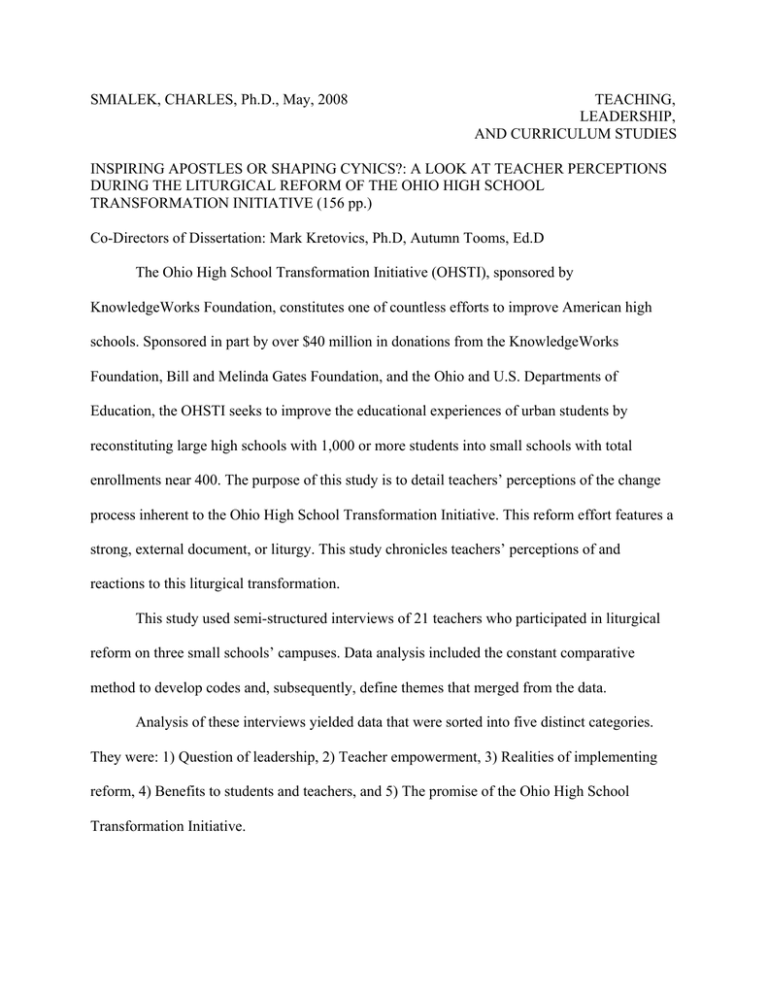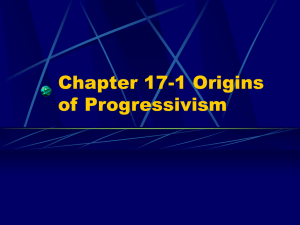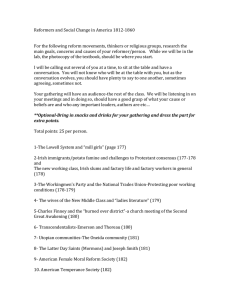SMIALEK, CHARLES, Ph.D., May,
advertisement

SMIALEK, CHARLES, Ph.D., May, 2008 TEACHING, LEADERSHIP, AND CURRICULUM STUDIES INSPIRING APOSTLES OR SHAPING CYNICS?: A LOOK AT TEACHER PERCEPTIONS DURING THE LITURGICAL REFORM OF THE OHIO HIGH SCHOOL TRANSFORMATION INITIATIVE (156 pp.) Co-Directors of Dissertation: Mark Kretovics, Ph.D, Autumn Tooms, Ed.D The Ohio High School Transformation Initiative (OHSTI), sponsored by KnowledgeWorks Foundation, constitutes one of countless efforts to improve American high schools. Sponsored in part by over $40 million in donations from the KnowledgeWorks Foundation, Bill and Melinda Gates Foundation, and the Ohio and U.S. Departments of Education, the OHSTI seeks to improve the educational experiences of urban students by reconstituting large high schools with 1,000 or more students into small schools with total enrollments near 400. The purpose of this study is to detail teachers’ perceptions of the change process inherent to the Ohio High School Transformation Initiative. This reform effort features a strong, external document, or liturgy. This study chronicles teachers’ perceptions of and reactions to this liturgical transformation. This study used semi-structured interviews of 21 teachers who participated in liturgical reform on three small schools’ campuses. Data analysis included the constant comparative method to develop codes and, subsequently, define themes that merged from the data. Analysis of these interviews yielded data that were sorted into five distinct categories. They were: 1) Question of leadership, 2) Teacher empowerment, 3) Realities of implementing reform, 4) Benefits to students and teachers, and 5) The promise of the Ohio High School Transformation Initiative. The cumulative impact of this study is largely positive for future small schools conversions. Teachers that participated in this study experienced comprehensive reform within their schools. Some helped to lead these reform efforts, others resisted the initiative. These teachers serve as important witnesses to help explain the experiences of one of the constituencies most directly affected by liturgical reform. Their stories contain powerful descriptions of the implications of the OHSTI, including explanations of benefits to the process and warnings against detrimental practices. This study is important to those contemplating future liturgical reform efforts because it presents these teachers’ stories. Teachers believe that the concept will, ultimately, succeed. The conclusions reached in this study highlight the difficult nature of changing school culture, and the importance of securing sufficient teacher support to sustain reform.





